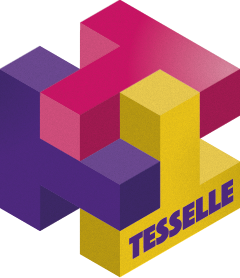
tesselle
The tesselle project is a comprehensive collection of R packages tailored for archaeological research and education.
The use of programming languages in archaeological research has witnessed a notable surge in the last decade, particularly with R (Schmidt and Marwick 2020), a versatile statistical computing language that fosters the development of specialized packages. There are currently more than 22,000 packages available on the Comprehensive R Archive Network (CRAN), so there is more than enough to cover most analytical needs. Thanks to the collective efforts of the community, a wealth of high-quality packages tailored to archaeology have been developed.
The tesselle packages are centered on quantitative analysis methods specifically crafted for archaeology. They are designed to complement both general-purpose and other specialized statistical packages. These packages serve as a versatile toolbox, facilitating the exploration and analysis of common data types in archaeology, such as count data, compositional data or chronological data, and enabling the construction of reproducible workflows. Complementary packages for visualization, data preparation, and educational resources augment the tesselle ecosystem.
Yet another package
This collection of R packages aims to contribute to the development of open-source computational archaeology (Batist and Roe 2023). The project’s inception, its objectives, design principles, and key components are outlined in Frerebeau (2024).
The project has reached a stable state and is being actively developed, with transparency and reliability in mind:
- All packages are distributed under GNU General Public License: you have the freedom to run, copy, distribute, study, change and improve them.
- All packages are publicly maintained, with source code accessible and versioned.
- All packages undergo rigorous testing and code coverage. Most of them are distributed on CRAN, which implies adherence to stringent standards (Chambers 2020).
- Dependencies are kept to a bare minimum.
Fell free to contribute!
Contributors
The tessel project is maintained by Nicolas Frerebeau.
Brice Lebrun designed the project and package logos.
Contributors to the project include (list by name): Vincent Arel-Bundock, Jean-Baptiste Fourvel, Brice Lebrun, Ben Marwick, Matthew Peeples, Anne Philippe, Joe Roe.
Institutional support
This project is supported by:
Archéosciences Bordeaux
UMR 6034Maison de l’Archéologie
Université Bordeaux Montaigne
F-33607 Pessac cedex
www.archeosciences-bordeaux.fr
Centre de Recherche et d’Etudes pour l’Art Préhistorique
MSHS-Toulouse (UAR 3414)Maison de la Recherche
Université Toulouse - Jean Jaurès
F-31058 Toulouse cedex 9
mshs.univ-toulouse.fr

